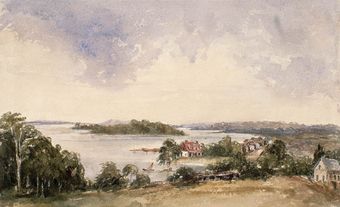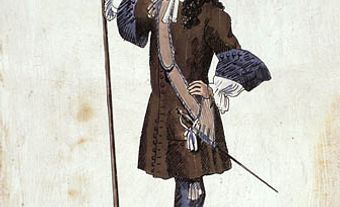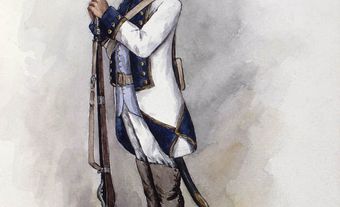In New France, the militia captain was the direct commanding officer of a company of militia comprising some 50 men. His role was to train his troops in time of peace and command them in military operations in time of war. Companies of militia were organized by parish, and their captains were often influential men. Most of them were former members of the Carignan-Salières Regiment or of the Troupes de la Marine.

Militia Captain
The militia captain’s ability to inspire trust and respect in his men was fundamental to the performance of his duties. Baqueville de La Potherie wrote in 1753 that it was important “for a Canadian to be convinced of his captain’s worth in order to obey him.” More than a soldier, the militia captain enjoyed many privileges that distinguished him from ordinary citizens of New France. He was allowed to carry a sword and wear a high collar ― both symbols of his authority. In church, his pew was close by those of the seigneur (see Seigneurial System), the officers of justice and the wardens of the church. These distinctions enhanced his image as a leader.
Over the years, the social role of militia captains in New France continued to grow. Receiving their orders directly from the Governor of New France and the judiciary, militia captains were also charged with executing the Intendant’s orders regarding roads and public works. In seigneuries where there were no regular justices or representatives of the Intendant, militia captains also served as police officers and officers of the courts. They made arrests and might even take care of the mail. Militia captains served as crucial intermediaries between the government and the people. It should be noted that although the names of militia officers’ ranks were borrowed from those of officers in the military, there was no actual equivalence between them. A militia captain could not serve as a captain of infantry or exercise authority over non-commissioned officers in the army. In contrast, any officer of the Troupes de la Marine or the regular army could command militia officers.
Militia captains participated actively in all of the armed conflicts that arose in Canada. Officially established by a letter from King Louis XIV in 1669, the militia system was maintained after the Conquest of New France. Militia captains continued to play part of their role as intermediaries between the public and the authorities until Canadian Confederation in 1867.

 Share on Facebook
Share on Facebook Share on X
Share on X Share by Email
Share by Email Share on Google Classroom
Share on Google Classroom



